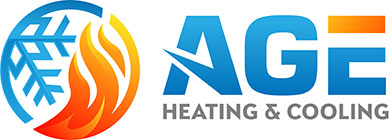We all like saving money on our monthly utility bills, but it turns out there’s a way to lower energy use, even when you’re not even home.
It starts with your thermostat. By learning more about its special features and settings, you can tailor the temperature to your needs. You can create a number of automated temperature settings for when you’re home, away or even when you’re sleeping.
With a few simple adjustments, you can enjoy comfy temperatures while keeping more money in your pocket. Here are some ways your thermostat can save you money in the summer:
While at Home
Whenever you’re at home, you want comfortable temperatures. It’s only natural to want your thermostat lower in the summer if you’re indoors to appreciate the cool air.
But the ideal temperature for when you’re in your home during the summer is in fact anywhere between 78 and 80 degrees Fahrenheit. This way, you’ll avoid the worst of summer while keeping your energy bill more manageable.
While Away
If you’re setting the temperature for a vacation or other trip away from the house, it’s advantageous to set the thermostat higher for while they’re gone.
For some homes, you can set the thermostat to temperatures as high as 88 degrees while no one is home and then lower it back to the sweet spot of 78-80 degrees after you return. This way, your air conditioning system isn’t working around the clock to keep an empty house cool.
While Asleep
When it comes to sleeping in the summer, you want a nice cool temperature. You should try and keep things between 68-72 degrees Fahrenheit. You won’t have to worry about getting too hot or too cold while you’re trying to sleep.
Other Ways to Use Less Energy:
- Put in a smart thermostat: Using a smart thermostat in the summer is an excellent way to reduce energy costs since it can plan your temperature adjustments according to your lifestyle and personal preferences. A smart thermostat manages the temperature if you are home or sleeping, before allowing it to get a little warmer when no one is home. Using reputed brands and models such as the Lennox iComfort, you can adjust the temperature remotely through your smartphone, tablet or laptop. Planning smart thermostat installation in your Sandpoint home is an effortless way to set the correct temperature even when you aren’t home.
- Replace current equipment with a newer HVAC system: Upgrading your HVAC system can save money in the long run. With greater energy efficiency, your utility bills will be lower because it requires less energy to reach your preferred temperatures. Air conditioning installation in Sandpoint is a breeze for experienced professionals like Age Heating & Cooling.
- Stay on top of routine AC maintenance: Investing in or ignoring regular air conditioning maintenance in Sandpoint can have a serious effect on your total monthly energy use. By regularly cleaning the coils, checking for damage and clearing ventilation of dust and debris, this can help your HVAC system perform better during day-to-day use.. Higher energy efficiency will also reduce strain on key parts and lowers operational costs, resulting in lower energy usage and subsequently, smaller bills.
- Replace your air filter regularly: Cleaning or replacing the air filter regularly saves money by keeping airflow as smooth and consistent as possible. When filters are old and less effective, your air conditioner will have to work harder, and the strain can reduce the system’s life span and result in breakdowns.
- Confirm your attic is sufficiently insulated: Insulation is a vital part of maintaining an energy-efficient home, securing the hot air outside and the cool air inside over the summer. The North American Insulation Manufacturers Association (NAIMA) recommends that homes in the southern United States should install at least 13-14 inches of insulation, while those in northern U.S. states should have 16-18 inches.
- Check your ventilation: Damage to the ventilation is capable of increasing your energy bills much more than 20 percent, plus it can potentially allow harmful emissions from your water heater, clothes dryer and other appliances to get into the atmosphere of your home. Finding any leaks fast and sealing them can help with both these issues.
- Seal all other leaky spots in your home: Finding and sealing any remaining leaks in your home with caulk, foam sealant or weather-stripping helps keep things cooler during those hot summer days. Don’t forget to check for any gaps around windows, doors and even outdoor fixtures. Taking the time to seal up any leaks now can help you save a lot over time.







